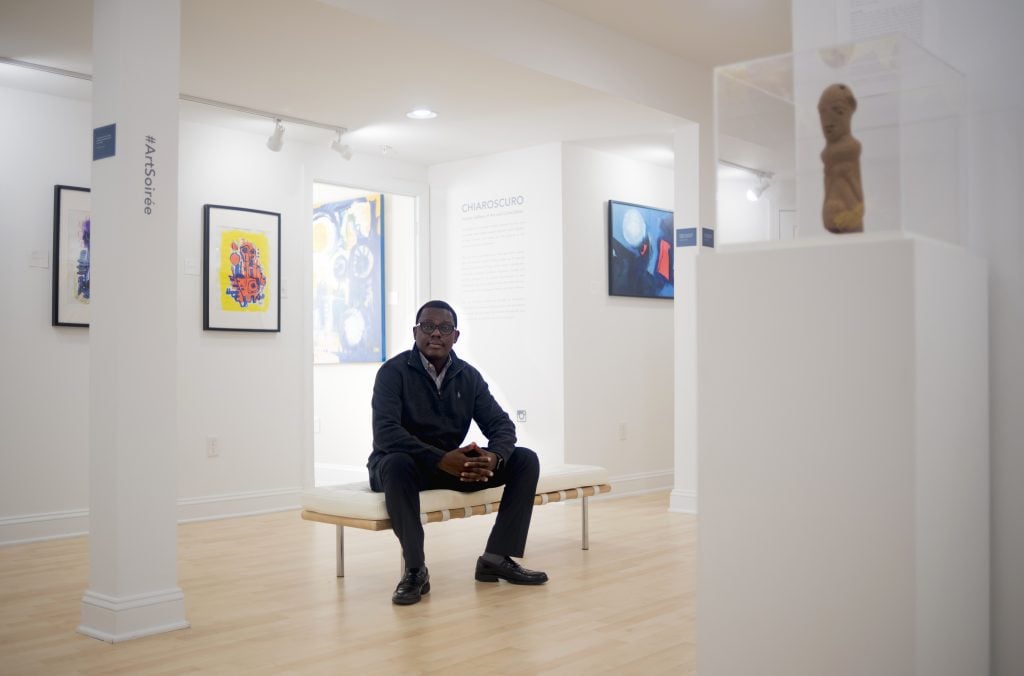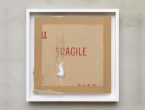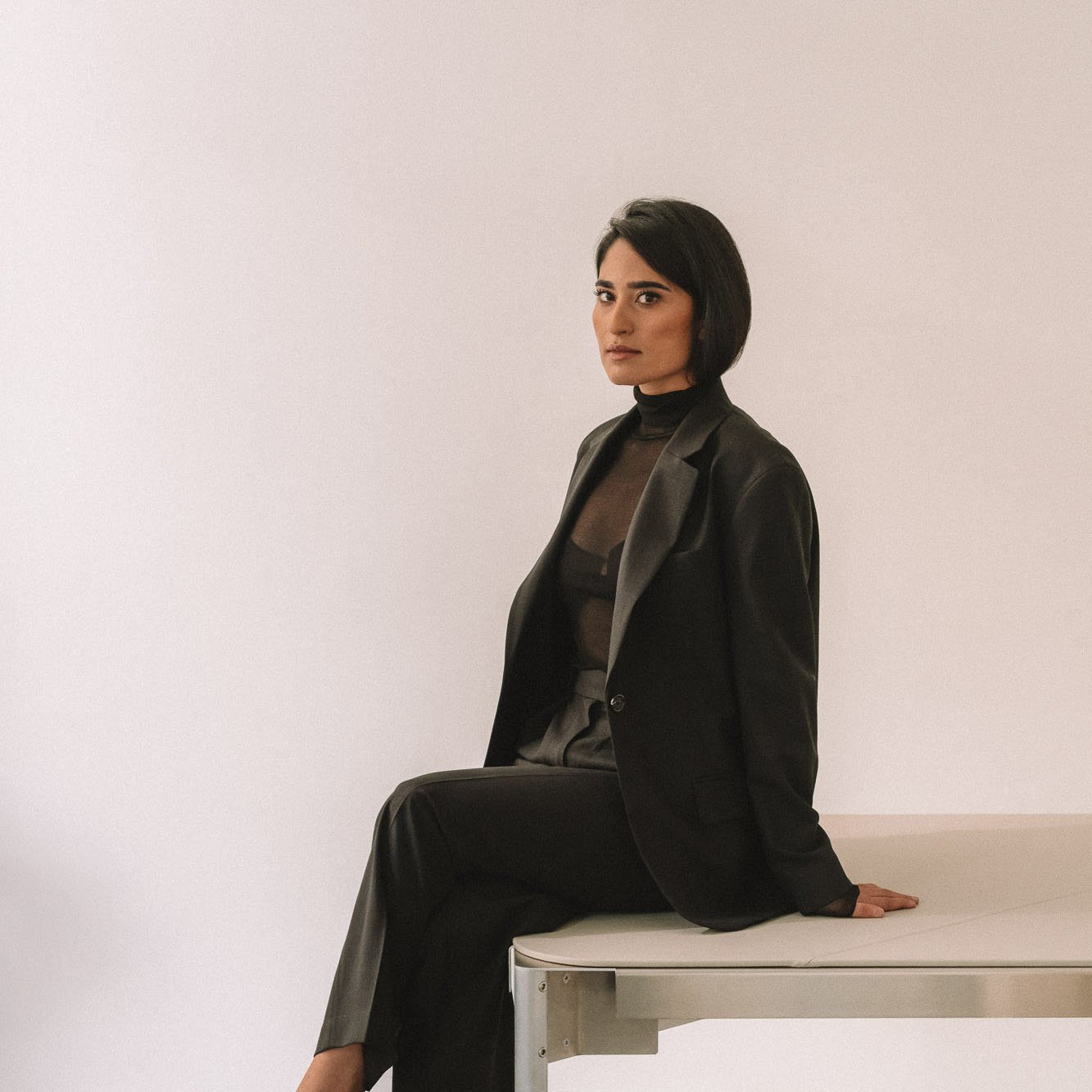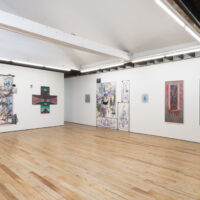The Oblivion
2009 - Drawing & Print (Drawing & Print)
Audra Knutson
Audra Knutson’s work The Oblivion was carved and printed in conjunction with the print The Death . Also a hand-printed linocut, many of the details in this work are based on photocopies of images sourced by the artist from her local library. At the time she was making these works, she recalls looking at ‘beautiful, sad, timeless and stark photographs taken in old-work segments of Europe and being influenced by their aesthetic and emotional gravitas. In The Oblivion both movement and humans are present yet elusive: objects that are usually in motion appear still (a bicycle, a horse, a burning candle) and demonic-like masks obscure the three figures’ human qualities. There is a darkness and mystery present in both prints, which echoes the irrational nature of the novel by Rainer Maria Rilke, which was a source of inspiration for the series. As with Rilke’s novel, Knutson’s haunting images have an inherent disbelief, solitude, and profound anxiety.
Based in San Francisco, Audra Knutson is known for her delicate and intricate works that depict elements from nature as well as scenes and objects from the everyday. Working across printmaking, letterpress printing, bookbinding, painting, drawing, metalsmithing and weaving, her compositions fluctuate between figuration and abstraction and have a distinctive style that considers in equal parts the objects that she depicts as well as the space that surrounds them. In several of her compositions, white, empty areas surround and emphasize vibrant zones of organic geometry, patterns, textures and color. Often suggesting natural formations — from plants and animals to salt crystals, mountains, and rolling waves — Knutson’s works speak of her connection to the natural world. Although some pieces originate from her observation of her surrounds, Knutson also leans on and depicts images and knowledge from books and other artists. Several of her works are interrelated and presented as series, and often elements and ideas interplay and weave between series as well as between bodies of work.
Colors:
Related works sharing similar palette

© » LENS CULTURE
49/23 — Considering Technology, AI and Photography - Photographs by Gregory Eddi Jones | Interview by Liz Sales | LensCulture Feature 49/23 — Considering Technology, AI and Photography In his new thought-provoking series “49/23,” Gregory Eddi Jones considers the implications of rapidly advancing technology by intertwining vintage photography and AI-generated images...
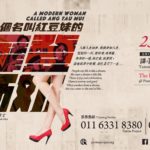
© » ARTS EQUATOR
Weekly Picks: Malaysia (23 July – 29 July 2018) | ArtsEquator Thinking and Talking about Arts and Culture in Southeast Asia Malaysia July 23, 2018 Caravaggio Art Talk 3, at Balai Seni Negara, 25 July, 11am In conjunction with the Caravaggio Opera Omnia exhibition, art expert Sabiana Paoli will be providing audience members insights to Caravaggio’s most significant works made in Rome, Malta, Naples and Sicily...

© » HYPERALLERGIC
Artist Jesse Darling Wins Tate Britain's Turner Prize Skip to content Jesse Darling at the Turner Prize 2023 award ceremony at Towner Eastbourne (photo by Victor Frankowski/Hello Content; all images courtesy Tate) Jesse Darling has won this year’s Turner Prize , given annually to a British visual artist by the Tate museums...

© » KADIST
Nidhal Chamekh
2016Nidhal Chamekh made the first drawings of the ongoing series Mémoire Promise in 2013...

© » SLASH PARIS
Fabienne Verdier — Horizons et Chênes-lièges — Galerie Lelong & Co — Exposition — Slash Paris Connexion Newsletter Twitter Facebook Fabienne Verdier — Horizons et Chênes-lièges — Galerie Lelong & Co — Exposition — Slash Paris Français English Accueil Événements Artistes Lieux Magazine Vidéos Retour Précédent Suivant Fabienne Verdier — Horizons et Chênes-lièges Exposition Peinture Fabienne Verdier, Chêne-liège #4, 2023 Pastel gras et pastel sec sur vélin d’Arches teinté — 49 × 28 cm Courtesy de l’artiste et galerie Lelong & Co...

© » KADIST
Shahryar Nashat
2015Employing both the High Modernist technique of abstraction and monochronism, as in the work of Lucio Fontana and Yves Klein, and bodily states of fetishization, Yea High (sweetpreparator) reworks the art historical canon of movement and the body to consider flesh as a physical construction of man-made matter...
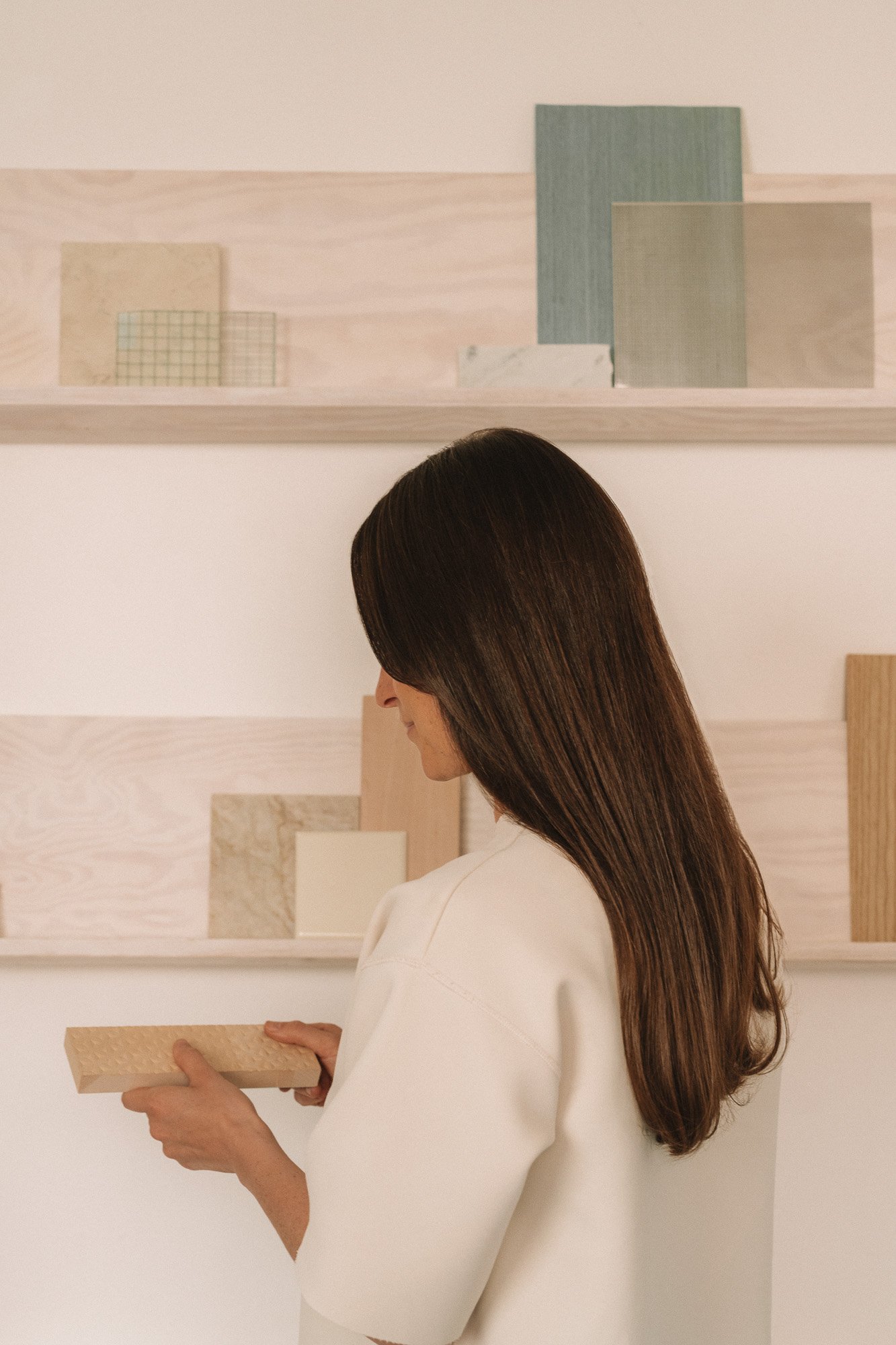
© » IGNANT
A Visit To Studio Hanne Willmann: Clean Design That Evokes Emotions - IGNANT Name Studio Hanne WIllmann Images Clemens Poloczek Words Marie-Louise Schmidlin For Berlin-based product designer Hanne Willmann , one of the essential functions of furniture is to create an emotional response in its users...

